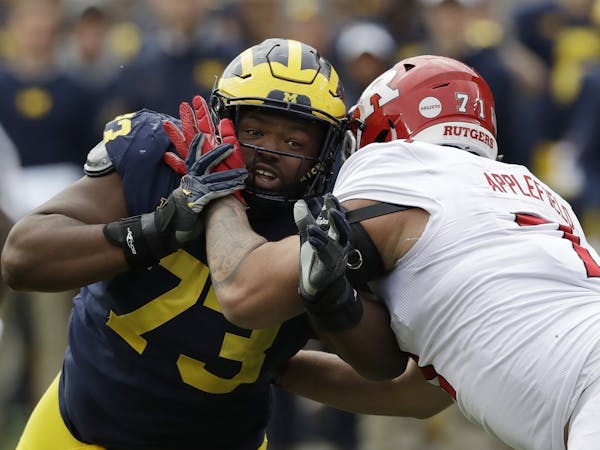This week a table at Elmo's Steak House or a Marriott lobby barstool in downtown Indianapolis will help grease the skids of the impending NFL news avalanche coming next month.
That's when free-agency decisions, led this year by the sweepstakes for Kirk Cousins and possibly Case Keenum, will be finalized. Before the opening bell on March 14 is this week's annual scouting combine at Lucas Oil Stadium, a six-day affair where more than 300 draft prospects are medically, physically and psychologically tested. The combine essentially acts as the league's premier offseason convention for all things NFL.
"You'll see everyone in the NFL within a four-block radius," said Blake Baratz, a Minneapolis-based player agent at The Institute for Athletes.
Hundreds of young athletes wear self-identifying lanyards, on the backs of which are scribbled NFL teams, sometimes with a hotel room number and time. That's where and when general managers, coaches and evaluators get their prescribed 15-minute formal interviews (limit of 60 over six nights) with selected players.
Sometimes an agent will drop by the hotel room to talk business.
Three weeks before receiver Adam Thielen signed a three-year, $17 million extension, Baratz, his representative, met with Vikings brass "two, three, four" times at Indy hotels and restaurants.
The sides needed to talk through Thielen's restricted free-agent tender (he got a second-rounder) and parameters of an eventual long-term deal. Contract discussions during the scouting combine "got the ball rolling" on Thielen's contract now keeping him in Minnesota through the 2020 season.
"There were times [Vikings cap manager] Rob [Brzezinski] and I would just sit down and try to cut through some of the nonsense over a beer," Baratz said, "and talk frankly."
The Vikings' to-do list this offseason starts at quarterback. General Manager Rick Spielman enters the draft with seven picks and a track record of aggressive maneuvers to land someone his staff is high on.
By the time the Vikings are on the clock with the 30th pick in April, their quarterback plan will be charted based on free agency decisions next month. Will they work out a massive deal with Cousins? Or will they pick from or make a combination of moves involving Teddy Bridgewater, Case Keenum, A.J. McCarron, or others?
An initial course has already been set. The Vikings aren't expected to franchise tag Keenum, according to a NFL Media report on Monday.
"We'll have a pretty good game plan when we head down to the combine on a lot of things," Spielman said during Super Bowl week.
Dominating the forefront this week are the draft prospects.
Every year a player like John Ross makes a name for himself. The former University of Washington receiver sprinted onto the national radar and into the draft's top 10 last year with a 4.22-second time in the 40-yard dash. You can make a safe bet on a top sprinter finding his way to Minnesota. About half of the Vikings' draft picks over the last four years had 40 times near the top of their position groups, ranging from linebacker Anthony Barr to offensive lineman Danny Isidora.
Still, when teams assess anything other than medical data in Indianapolis, a grain of salt must be applied, said former NFL scout Dan Hatman who now runs the Scouting Academy. Lengthy preparation for on-field drills and interviews has reached the point of clouding the legitimacy of the process, according to Hatman.
"The only thing that is authentic in Indy is the medical," Hatman said.
One player whom the Vikings will likely be evaluating closely is Texas left tackle Connor Williams, who was a consensus first-team All-America as a sophomore before injuries derailed his junior season. He suffered sprained ligaments and a meniscus tear in his left knee in September, and five months later is expected to allow NFL teams to evaluate his knee at the combine.
Offensive line and defensive tackle are a couple of areas in play for the Vikings at pick No. 30, depending on how they fill needs in free agency.
The draft's top prospects at tackle on both sides of the ball leave a lot to be desired, Hatman said. Defensively, more college tackles project as NFL nose guards, with a few exceptions among the top talents in Michigan's Maurice Hurst and Florida's Taven Bryan.
Offensively, the line prospects are better at guard than at tackle, Hatman said.
"I think you've got a competent group of [offensive tackles] in Mike McGlinchey and Connor Williams that are basically plug-and-plays," Hatman said. "And you've got a big group of big athletes you've got to hope and figure out."
Figuring out is the name of this NFL season.
